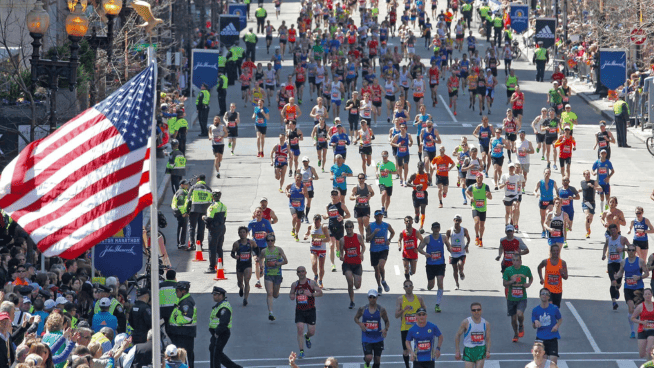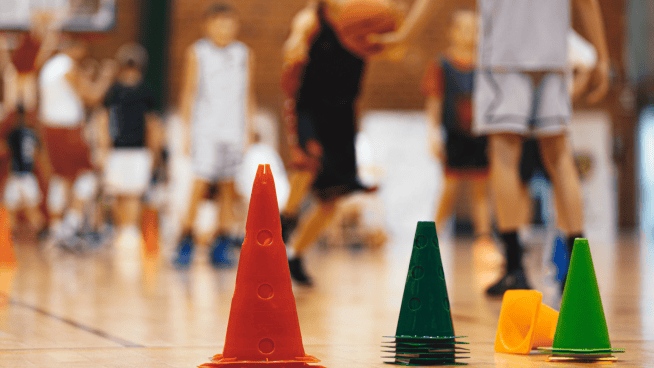3 Ways to Elevate Your Golf Mental Game
Golf is a game that we commonly think is played on a 300-yard fairway. In reality it’s often played across a 6-inch space between your ears. Mastery of golf is essentially mastery of the sport’s mental game. Many golfers have trouble grasping this concept and are unsure of where to start when it comes to becoming more mentally equipped for any given condition or situation. Let’s start with an example of an athlete I have worked with in the past.
Josh, a talented and well-trained golfer, came to me requesting help with “keeping his cool” on the course. After a brief conversation at our initial meeting, he described a huge performance gap in his practice round play and tournament play. He struggled with transitioning his low scores from a low-pressure situation to a higher-pressure one. Why? The course may have been the same, his routines may have been the same, but his mindset was not the same. Below are some of the strategies Josh and I worked on and are some of the common mental game approaches used by amateurs and pros alike.
Set Challenging Yet Realistic Goals
Did you shoot an 88 in your last round and you aren’t satisfied with it? There are a couple different approaches you can take to improve your score on your next round. First, reflect on what went right in that tournament, even it was just a few holes. What process was different on those holes versus the bad ones? If you can recall something that worked, make a commitment to do what works instead of fighting yourself and your swing. Process goals, a must for a good round of golf, involve the small things such as maintaining a positive attitude or using your pre-shot routine every time you’re up. Setting some process goals helps create the outcome you’re looking for.
I highly recommend golfers (or any other individual sport athlete, for that matter) set a range of goals, allowing yourself room for error and success. On the one end of the range (the minimum) set a score you think you can shoot on any given day, and on the other end of the range (the maximum), set one that is within your ability, but challenges you to focus and bring your best to the course. As an example, using the golfer that shot an 88, perhaps setting a range of 86-78 may be a good target for his given tournament or event.
Practice The Tough Shots
“Be willing to be uncomfortable. Be comfortable being uncomfortable.” Peter McWilliams.
We often don’t think of golf as being an “uncomfortable sport.” Until you hit that shot wide left into a tree, then things change quickly. An unexpected error and a bad lie often cause negative emotions that can easily rob you of a good performance. However, if we learn to keep our cool when these shots happen, we can change the results.
The easiest way to work around these situations is to practice them often. Incorporating tough shots into pre-tournament practice will prepare you for anything that unfolds on the course, resulting in increased confidence and less frustration with even the toughest lies.
Some things to try on the practice course:
- Place the ball deliberately in the rough, near trees or in the sand, and hit at least 10 of those shots at a time or until you feel more in control.
- For putting, place the ball 3 feet out, hit five in a row, then 6 feet out, hit another five, then 10 feet, hitting five in a row. It can take a while but this drill is a great tool for teaching mental toughness, as it forces you to control your emotions in order to sink the putt.
I often tell my golfers to spend time at least once a week on shots they don’t want to do.
See Your Shot Before Taking It
There is no better example of this principle in golf than the PGA’s Jason Day. Day is meticulous about his pre-shot routine, and the majority of it includes him “seeing, feeling and selecting” his shot before stepping up and standing over the ball.
One can only practice so much, and the rest of the training must be mental in order to improve your game. Studies have shown that the same brain regions and muscles fire during visualization as they do when actually swinging the club. Powerful, isn’t it? And you really don’t have to spend a ton of time doing it to get the benefits.
There are several ways to incorporate imagery and visualization. Like Jason Day, going through a very brief but vivid session before making a shot is ideal if the goal is peak performance. To work through various skills and scenarios, try setting aside 10-15 mins several days per week and go through various shots—chipping, putting, fades, etc. When you feel comfortable with what you see, chances are you are ready to see it in action. Do this often, just like stretching for best results.
Putting It All Together
Remember that changes and new habits take time, so enjoy the process of becoming a mentally stronger player. Don’t be afraid to make mistakes because that’s where learning happens and lastly, whether your handicap is 2 or 35, never forget to enjoy the game!
READ MORE:
- How to Stay Mentally Strong on the Golf Course
- Add Power to Your Golf Swing With 4 Sandbag Exercises
- The New Age of Golf Training is Creating Stronger and More Athletic
- How Alex Morgan Gets Her Mind Right Before Games
Steve@Colorado/iStockPhoto, PhotoTalk/iStockPhoto
RECOMMENDED FOR YOU
MOST POPULAR
3 Ways to Elevate Your Golf Mental Game
Golf is a game that we commonly think is played on a 300-yard fairway. In reality it’s often played across a 6-inch space between your ears. Mastery of golf is essentially mastery of the sport’s mental game. Many golfers have trouble grasping this concept and are unsure of where to start when it comes to becoming more mentally equipped for any given condition or situation. Let’s start with an example of an athlete I have worked with in the past.
Josh, a talented and well-trained golfer, came to me requesting help with “keeping his cool” on the course. After a brief conversation at our initial meeting, he described a huge performance gap in his practice round play and tournament play. He struggled with transitioning his low scores from a low-pressure situation to a higher-pressure one. Why? The course may have been the same, his routines may have been the same, but his mindset was not the same. Below are some of the strategies Josh and I worked on and are some of the common mental game approaches used by amateurs and pros alike.
Set Challenging Yet Realistic Goals
Did you shoot an 88 in your last round and you aren’t satisfied with it? There are a couple different approaches you can take to improve your score on your next round. First, reflect on what went right in that tournament, even it was just a few holes. What process was different on those holes versus the bad ones? If you can recall something that worked, make a commitment to do what works instead of fighting yourself and your swing. Process goals, a must for a good round of golf, involve the small things such as maintaining a positive attitude or using your pre-shot routine every time you’re up. Setting some process goals helps create the outcome you’re looking for.
I highly recommend golfers (or any other individual sport athlete, for that matter) set a range of goals, allowing yourself room for error and success. On the one end of the range (the minimum) set a score you think you can shoot on any given day, and on the other end of the range (the maximum), set one that is within your ability, but challenges you to focus and bring your best to the course. As an example, using the golfer that shot an 88, perhaps setting a range of 86-78 may be a good target for his given tournament or event.
Practice The Tough Shots
“Be willing to be uncomfortable. Be comfortable being uncomfortable.” Peter McWilliams.
We often don’t think of golf as being an “uncomfortable sport.” Until you hit that shot wide left into a tree, then things change quickly. An unexpected error and a bad lie often cause negative emotions that can easily rob you of a good performance. However, if we learn to keep our cool when these shots happen, we can change the results.
The easiest way to work around these situations is to practice them often. Incorporating tough shots into pre-tournament practice will prepare you for anything that unfolds on the course, resulting in increased confidence and less frustration with even the toughest lies.
Some things to try on the practice course:
- Place the ball deliberately in the rough, near trees or in the sand, and hit at least 10 of those shots at a time or until you feel more in control.
- For putting, place the ball 3 feet out, hit five in a row, then 6 feet out, hit another five, then 10 feet, hitting five in a row. It can take a while but this drill is a great tool for teaching mental toughness, as it forces you to control your emotions in order to sink the putt.
I often tell my golfers to spend time at least once a week on shots they don’t want to do.
See Your Shot Before Taking It
There is no better example of this principle in golf than the PGA’s Jason Day. Day is meticulous about his pre-shot routine, and the majority of it includes him “seeing, feeling and selecting” his shot before stepping up and standing over the ball.
One can only practice so much, and the rest of the training must be mental in order to improve your game. Studies have shown that the same brain regions and muscles fire during visualization as they do when actually swinging the club. Powerful, isn’t it? And you really don’t have to spend a ton of time doing it to get the benefits.
There are several ways to incorporate imagery and visualization. Like Jason Day, going through a very brief but vivid session before making a shot is ideal if the goal is peak performance. To work through various skills and scenarios, try setting aside 10-15 mins several days per week and go through various shots—chipping, putting, fades, etc. When you feel comfortable with what you see, chances are you are ready to see it in action. Do this often, just like stretching for best results.
Putting It All Together
Remember that changes and new habits take time, so enjoy the process of becoming a mentally stronger player. Don’t be afraid to make mistakes because that’s where learning happens and lastly, whether your handicap is 2 or 35, never forget to enjoy the game!
READ MORE:
- How to Stay Mentally Strong on the Golf Course
- Add Power to Your Golf Swing With 4 Sandbag Exercises
- The New Age of Golf Training is Creating Stronger and More Athletic
- How Alex Morgan Gets Her Mind Right Before Games
Steve@Colorado/iStockPhoto, PhotoTalk/iStockPhoto











